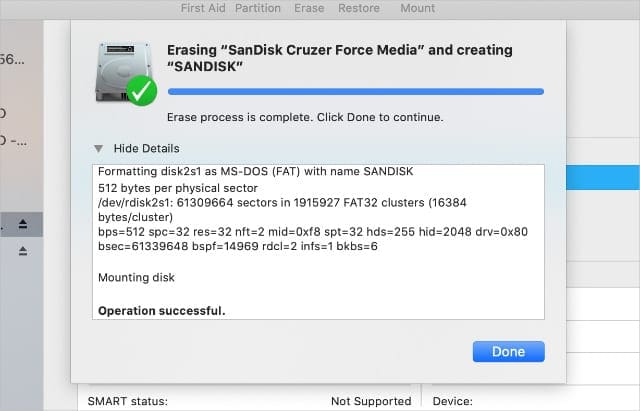

If you’re still experiencing issues starting up your computer, there are some alternatives to try, including use of fsck in a command-line interface. Now, on the left menu, choose the disk or volume you want to repair. Select Disk Utility option and click Continue. Disk Utility will then run a scan and repair on the disk. Soon after your Mac restarts, hold Command and R keys until the Apple logo shows up. Select your OS X volume, and click “Repair”.

Click the triangle to the left of the hard drive icon to display a list of your disk volumes and partitions. Once in Disk Utility, either from an installation disc or in the Recovery System, proceed to the “First Aid” tab. (Do not click Continue in the first screen of the installer, or you’ll have to start up from the disc all over again to access Disk Utility.) Choose Disk Utility from the Installer menu. Hold the C key during start-up after inserting the disc.
Run disk utility mac command line mac os x#
If running Mac OS X v10.6 or earlier, you’ll need to run Disk Utility from a Mac OS X install or restore disc. (Note: you can also access Disk Utility from Mac OS X Internet Recovery – for more information, click on the Apple link at the bottom of the page.) Following Recovery System start-up you should see a desktop with an open “Mac OS X Utilities” window. If running Safe Mode is unsuccessful in fixing start up issues, or if you’re using a version earlier than Mac OS X 10.2, fix file system issues using Disk Utility:īoot into the Recovery System – press command+R as early as possible during start-up, and hold until the Apple icon appears. Note: Safe Mode won’t work if you have a firmware password. Safe mode should take itself though any checks and repairs, and you can restart your computer without holding any keys to leave safe mode. A progress bar should then appear, indicating that safe mode is performing a directory check. The Disk Utility interface is the same one you’ll see on your Mac OS X desktop, but run it from here and it’ll be able to repair problems with your system drive. Select the drive or partition you need to repair and click the First Aid button. Your Mac will search for problems and fix any that arise. In OS X Recovery, click the Disk Utility shortcut to launch the Disk Utility here. To do this, go to Spotlight (magnifying glass in the toolbar), search for Disk Utility, and click on Disk Utility.app. Release the key when you see the gray Apple icon and spinning wheel. Yes, you can also use Disk Utility to repair a hard drive on your Mac. Make sure your computer is shut down – then when turning the computer back on, start holding the shift key immediately after you hear the start-up tone.

If using Mac OS X 10.2 or later, you can start up in Safe Mode, which automatically performs disk check and repair: This article provides a couple preferred ways to fix these issues on a Mac computer. Improper shutdown or power interruptions can create file system errors that stunt the start-up process.


 0 kommentar(er)
0 kommentar(er)
